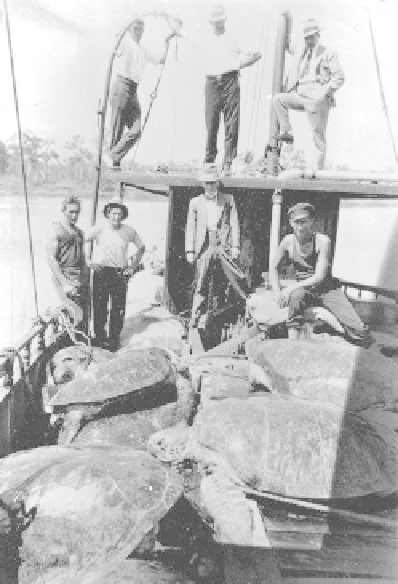Geoscience Reference
In-Depth Information
Historical Photographs Collection, John Oxley Library, Brisbane
Turtle fishing continued throughout the 1930s, but by the end of that decade
the industry had declined in the Gladstone area and had become concentrated
at the nesting site on Bramble Cay, in Torres Strait. During the years 1935-1936,
Dick (1936, p1142) reported that 73 turtles were caught from the islands near
Gladstone and in Torres Strait. In 1937-38, he stated that turtle fishing was
confined to Torres Strait, where 30 animals were harvested (Dick, 1938, p1283).
Production statistics published by the QDHM indicate that more than eighteen
tons of shell-meat were produced during 1933-1938. During the 1940s, in contrast
to the relatively small catches of turtles in the Capricorn-Bunker Group shown in
Figure 6.5,
more extensive catches were made in Torres Strait, bringing the total
harvest of turtles, as reported by the Queensland Fish Board for the period 1938-
1952, to 492 animals. However, catch rates were highly variable from one year to
the next during that period, as the Annual Reports of the Queensland Fish Board
Several Indigenous commercial turtle-fishing operations operated between
1940 and 1962 at Bramble Cay and in the Palm Island Group. One operation,
carried out by the Genami Gia Turtle Fishing enterprise using a turtle trap in

Search WWH ::

Custom Search